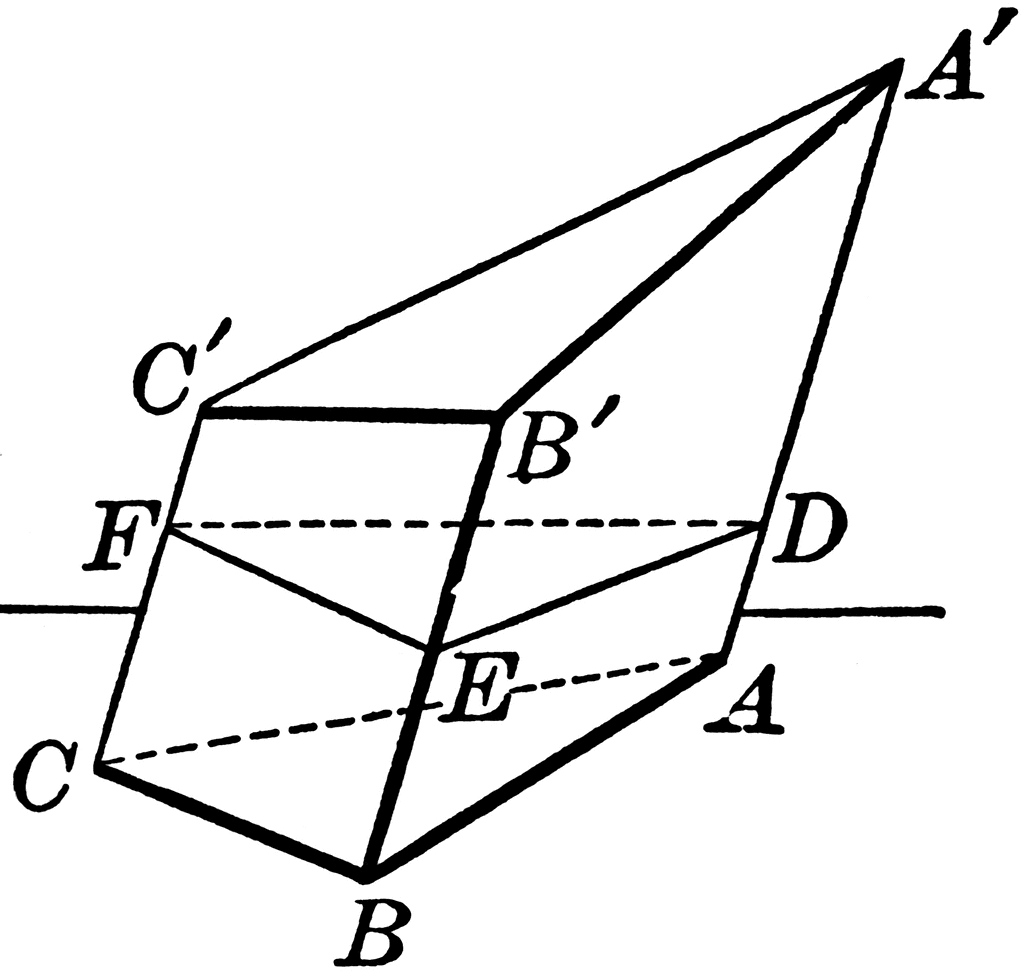
If a prism has the same base area and height as a pyramid, the volume of the prism is three times that of the pyramid.The sides of the prism are rectangles or parallelograms while sides of the pyramid are triangles.A prism has two bases while a pyramid has only one base with an apex.Both pyramids and Prism are polyhedrons.What is the difference between Pyramid and Prism? The volume of a pyramid is given by the formula V pyramid = 1/3 Ah A pyramid with infinitely many sides can be considered as a cone, where the base is a circle. Therefore, sometimes four sided pyramids are only considered as the only type of pyramids, which is a misconception. Many pyramids of the ancient world are built with four sides. Great pyramid of Giza is an example for a pyramid with four sides.

A pyramid has only one apex, but the number of vertices is dependent on polygonal base. The pyramid is also a polyhedron, with a polygonal base and a point (called the apex) connected by triangles extending from the edges. Many of the regular objects used in these fields are approximated using prism, and the properties of prisms are important in these scenarios.Ī prism can have any number of sides a cylinder can be considered as a prism with infinitely many sides and the above relation holds for cylinders too. This formula is important in many applications in physics, chemistry, and engineering. The volume of prisms is given by a simple formula V prism = Ah, where A is the area of the base and h is the height of the pyramid (the perpendicular distance between the planes of the two bases). If the two bases are positioned exactly above each other, then the rectangular sides and the base meets at right angles, and the prism is known as a right angled prism. However, it is not necessary that they are positioned exactly above the other. The sides are at a 90-degree angle from the base, i.e., the sides are perpendicular to their respective bases. Their sides are rectangular and meet with two adjacent sides at the edge. The volume is equal to the product of the ar.
#Volume of triangular prism with different bases how to#
Examples of Prism Characteristics of Prism. This geometry video tutorial explains how to calculate the volume of a triangular prism using a simple formula. The polygonal face is known as the base of the prism, and the two bases are parallel to each other. For example, a prism with a triangular base will be a triangular prism. Volume calculations and therefore also formulae have a. Examples of volume formulae applications.

The prism is a polyhedron it is a solid object consisting of two congruent (similar in shape and equal in size) polygonal faces with their identical edges connected by rectangles. The volume formula for a triangular prism is (height x base x length) / 2, as seen in the figure below: Similar to rectangular boxes, you need just three dimensions: height, base, and length in order to find its volume. They are not often found in nature, but most useful in mathematics, science and technology. Both prisms and pyramids are polyhedrons solid objects with polygonal shape surfaces. Prisms and Pyramids are solid (three dimensional) geometrical objects.


 0 kommentar(er)
0 kommentar(er)
